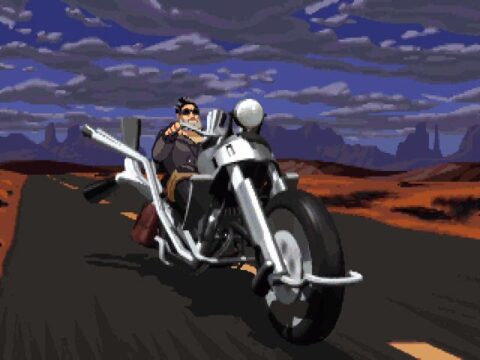
Full Throttle
Written by: Rik
Date posted: April 2, 2005
- Genre: Adventure
- Developed by: LucasArts
- Published by: LucasArts
- Year released: 1995
- Our score: 7
Making a point and clicker about biker gangs may not seem like the best idea in the world, but back in 1995 LucasArts probably figured they could probably get away with just about anything. Everyone still loved adventures, everyone loved LucasArts, more and more people were buying CD-ROM drives; hell, thousands of people even bought Rebel Assault. With your stock so high, you could easily slip out a couple of substandard titles without anyone noticing…
At first glance, everything seems to be in order. In fact, Full Throttle boasts almost everything that makes LucasArts adventures great: impeccable production values, great voice acting, and more than a couple of guffaw-worthy gags. In fact, when you throw in a few biker-rock tunes, a cameo from Mark Hamill and the fact that the main character has the coolest, most gravelly voice in gaming history, it seems that they may even have surpassed themselves. However, once you finish the game (and you will finish it) the feeling persists that you may have been a little bit short-changed.
The game opens up with your character, Ben, double-crossed, beaten up and without the keys to his bike. In traditional LucasArts fashion, you have a couple of minor tasks to accomplish before the game proper begins: get out of the dumpster in which you begin the game, and find whoever took your keys. Ben’s initial voice-over establishes him as an impressively cool central character, which always helps in games like this (Broken Sword, anyone?) and his deadpan delivery of some of the game’s killer lines is priceless. In this initial segment, take a look at some of the cardboard boxes surrounding the aforementioned dumpster and Ben growls, “Y’know, he really should flatten these… so that they can be recycled.” Fantastic.
Almost as soon as you get back on the road you’re in trouble again. Evil business tycoon Adrian Ripburger (voiced by Mark Hamill, not that you can tell) has bumped off motorcycle god and CEO of Corley Motors, Malcolm Corley, so that he can take over the company himself. As a well-known hater of the motorbike (and lover of the, erm, hovering minivan), he must be stopped. Worse still, he’s framed you for Corley’s murder, and now you’ve got the cops on your back. First, you’ve got to get your ride back together: y’see, Ripburger didn’t just take your keys, he sabotaged your bike, too.
And so begins a twisting, turning plot, full of intrigue and suspense. Well, not really. Y’see, Full Throttleis really pretty straightforward. Considering that you supposedly start the game without a clue what the hell happened to you, things seem to fall into place awfully quickly. In fact, you might even say that the game goes out of its way to make things easier for you. You start the game and you don’t have your keys. Get your keys and find that your bike falls apart. So you need to get a few parts – no problem. Then you can’t go anywhere because of a police roadblock. So you get past that, but then the bridge is out… and so on. Before you know it, you’ve got Ripburger by the short and curlies and, hey presto, you’ve finished it.
Full Throttle feels like a short game. This is mainly because it is a short game – it doesn’t last very long, and not just because it’s fun to play. Even allowing for meals and an above-average level of sociable activity, a reasonably seasoned adventurer could easily finish it in a weekend. However, there’s something about the way the game is constructed that adds to the general feeling of disappointment. As alluded to above, Full Throttle feels like a bunch of scenarios with very obvious objectives stapled together between some very nice cut-scenes. Of course, all point-and-clickers are similar in this respect, but the trick for the developer is to try and fool the player into thinking they have a whole world at their disposal to explore and enjoy. With this kind of game, there’s often no reason to examine bits of the scenery or useless objects, but some funny lines or amusing animations when you do can go a long way – especially when progress through the game proper grinds to a halt and you find yourself revisiting the same old locations in search of clues or something you’ve missed. Similarly, we all usually have an inkling what the ‘correct’ conversation thread is, but it’s difficult to resist the amusing alternatives when they’re provided.
Most LucasArts titles pull this off, dressing up essentially very simple puzzle games in an immersive and seemingly interactive environment and fooling the player into enjoying him(or her)self. However, Full Throttle is lacking in this department. It goes against tradition by failing (at any point) to use a map of the game world for location navigation, largely because you very rarely have much choice where you go. When you’re in one place, you have to solve this problem – when you’ve done it, then you can see some more of the game world.
Assuming none of the game’s puzzles stump you completely, the sections of the game which take up the most time involve some mouse-bashing ‘action’. One segment in particular, where you have to go to the old mine road and fight other bikers, can take a while, especially if you’re not sure why you’re fighting, or what weapon combinations to use. That said, at least it’s pretty easy once you know what you’re doing, unlike the somewhat fiddly stock-car racing towards the end of the game. It’s not that we’re complaining the game is too easy on the one hand and too difficult on the other; it’s just that you seem to spend just as much time faffing about with mouse-controlled sub-games as you do with the game itself.
Enough negativity. It’s generally accepted in adventuring folklore that Lucasarts’ 1995 releases (FT and The Dig) don’t really measure up to their best titles. That said, Full Throttleis still an extremely enjoyable game. The graphics look a little bit chunky these days, even in the re-release (some techno-wizardry has been used to smooth things over) but they’re exquisitely drawn and have aged well considering that they’re nine years old. And, as we’ve mentioned earlier, the sound is really cool. The music (especially the game’s theme tune, which kicks in over the opening credits) is more than passable biker-rock, and the voice-acting (especially – we have to say this again – your character) is excellent. The game itself may have its shortcomings, but its more likely you’ll complain about them after you’ve played through to the end. Which is to say that there’s enough here to keep you entertained for the duration, and that can’t be bad.
Now, there’s a potential joke here involving the relative importance of the length of a ‘ride’ (it’s a game about bikes – see what I did there? Huh?) and how much fun you have while doing it, but it’s getting late, and I’m not really sure whether it would be funny anyway…(No – FFG readership).

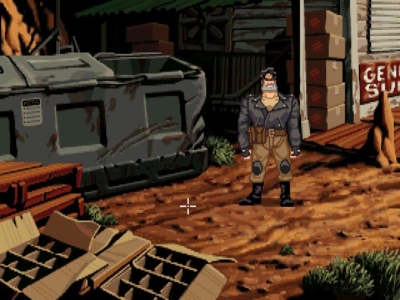
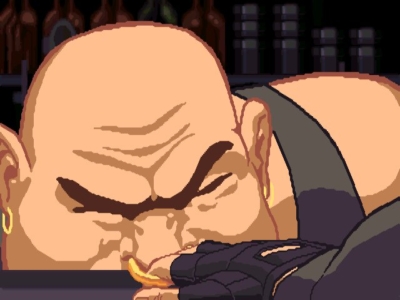
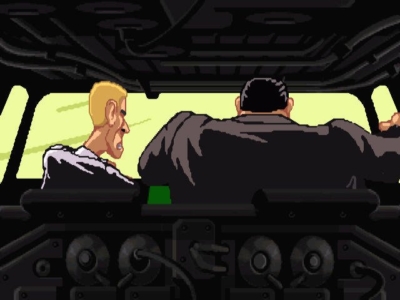
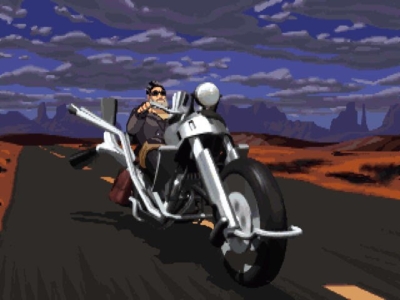

 Posts
Posts